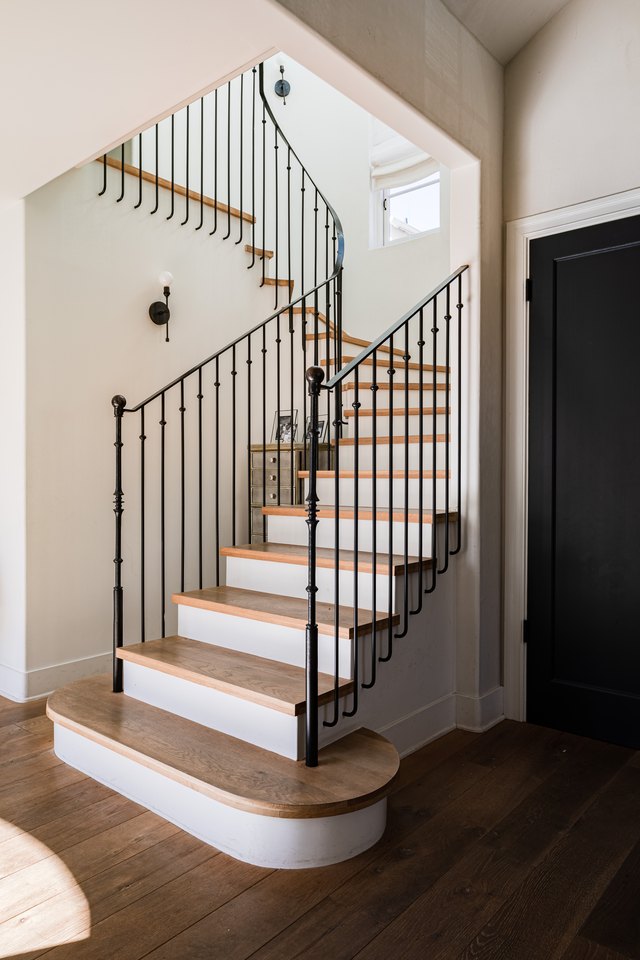

So that means that they can be harder to paint. They come in all sorts of styles, including twisty and intricate designs. Spindles are the vertical wooden columns that support the bannister. Let it completely dry before painting your spindles. While the final coat dries, peel off any decorator’s tape when the paint is still wet. If you’re covering a dark colour with a light colour, you might have to apply a third coat. Let the first coat dry and apply a second. As with primer, use a big brush for the flat spaces and a finer brush for fiddly details. So once you’ve got your colour, you can start painting. We can match 2.2 million, so you’re sure to find one you love. Or, invent your own colour with our mixing service. Have a look at our range to find one you love and order colour chips to see how the sample works in your home. We’ve got 2,000 pre-selected colours to choose from, or you can choose to mix your own. Paint the bannisterįind your colour first. If you have any intricate detailing, use a fine brush to ensure the primer doesn’t congeal. Paint in the direction of the grain (it will feel smooth when you run your hand over it), working in long strokes. Stir the primer and with a brush, apply it to the bannister. If you’re dramatically changing the colour (from dark to light, for example, or vice versa), use a suitable tinted primer to make the job easier.

Unless you’re painting bare, absorbent surfaces, you can apply our paint straight onto wood. You only need to prime if you’re using a paint that says it needs a primer. Noticed some chips in the wood? Fill them, let the filler dry and sand it down, so it’s flat with the wood. If your bannister is bare wood, it just needs lightly sanding to roughen up the surface.įor bannisters with peeling paint, remove the flaking sections first and then sand. If the bannister is shiny and has been varnished or painted, sand it back until the sheen is gone. This will cut through dirt and eliminate the grime that accumulates over time - think of the number of hands that touch this bannister! Use a clean cloth soaked in water to wash off the sugar soap and leave it to dry. Decorator’s tape is similar to masking tape, but it’s much better at stopping the paint colour from bleeding through the tape, giving you clean lines and a perfect finish.Ĭlean the bannister with sugar soap and a clean sponge. You should also use decorator’s tape to protect the areas you don’t want to get paint on, like on an adjoining spindle or wall. To stop the sheet from sliding around too much, stick it down with tape. Even the most careful painter can get small flecks of paint on the floor. If you’re not painting your stairs too, you’ll need to protect them with a dustsheet.
Stair rails how to#
How to paint a bannisterīannisters are pretty easy to paint because it’s a relatively flat surface. If you’re painting a dark staircase or hallway that doesn’t get much natural light, a finish that reflects what little light there is will help to brighten the space.īut if you want a more modern finish, our Furniture Paint is in dead flat matt and doesn’t reflect any light. Don’t worry if you’re confused by the difference we’ve answered all your questions about that. Wood paint often comes in three finishes eggshell, satin and gloss. It’s specially formulated to stick to wood, giving you a smooth and lasting finish. That way, you won’t splash paint on your freshly painted stairs. If you want to completely revamp your staircase and paint the stairs, bannister, spindles, start with the fiddly bannister and spindles first. You don’t have to be a contortionist to do a good job though, here are our top tips for a perfect finish.

Bannisters and spindles are fiddly features to paint.


 0 kommentar(er)
0 kommentar(er)
